
Succulent Jade
$18
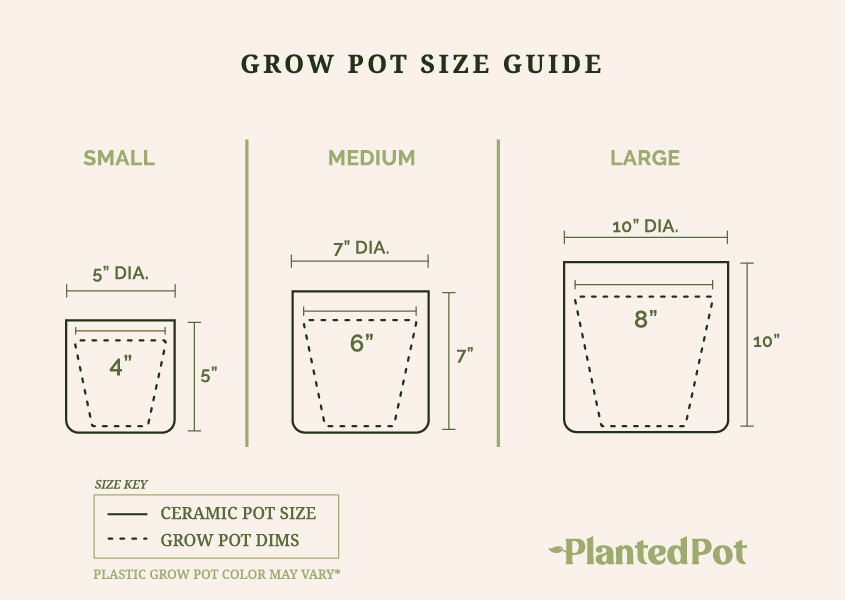 Plastic grow pots come in different colors, you may receive a black or rust colored pot.
Plastic grow pots come in different colors, you may receive a black or rust colored pot.
Known to be symbols of good luck, Jade Plants are a type of succulent that is easy and carefree to grow, blooming bright, oval-shaped, green leaves. Similar to jade jewelry, Jade Plants can be ornate yet subtle, complementing any room nicely. Since it belongs to the succulent family, taking care of a Jade Plant is a breeze. This plant requires minimal watering, full sunlight, and a balanced, water-soluble fertilizer. If you are looking for a small plant that promises a large amount of good luck, the Jade Plant is for you!
6 hours of bright, indirect sunlight per day. Direct sunlight may give it a slight sunburn, but it won’t dramatically harm these resilient desert plants.
Not as drought-tolerant as other succulent species, Jade likes moist soil—not wet, because you don’t want root rot—during the growing season (spring and summer), drier soil during the dormant season (fall and winter).
65°-75°F
Related Products
Succulent Jade
No, money doesn’t grow on trees, but that doesn’t mean you can’t have a money tree. Figuratively, of course. I’m not saying dollar bills will replace leaves, but some plants are so fulfilling to grow they earn value tenfold. The Jade Succulent is that plant. With its hardy roots and durable leaves, this plant symbolizes good luck around the world.
If you’re planning a casino trip or watching your team play a championship match, it might help to have a couple of Jade plants around.
Before making your first plant purchase or adding this succulent to your garden, read on further to learn more about the wonderful Jade Plant.
What is a Jade Succulent?
With hundreds of thousands of known flowers globally, botanists and scientists organized a classification system to organize these plants. The Jade Plant is a part of the Crassula genus, a Crassulaceae or Stonecrop family member. Parts of South Africa and Mozambique are the native home of Jade Plants.
Jade Plant is a simple and easy-to-remember nickname, but its official name is Crassula Ovata. Nicknames are fun and give plants a sense of personality. It may be referred to as Jade Plant Crassula Ovata, but it may have one of the following nicknames.
- Lucky Plant
- Money Plant
- Money Tree
The Jade Plant will thrive wherever its placed and encourage prosperity to its owner. It will not make money magically appear in your pocket, but its low maintenance will not burn a hole in your wallet either.
You might have already seen a picture of this plant and were left amazed at its beauty. As the Jade plant matures, the wooden stem thickens and resembles a tiny tree branch. The main trunk branches out into smaller stems that hold more leaves.
The Jade-green foliage contains thick and oval-shaped leaves making their appearance any more elegant. Jade plants also produce a white or pink flower that will become an attention-grabber wherever it is placed.
For the Jade to bloom, it needs to meet certain conditions. The best way to meet those conditions is by providing the best Jade plant care possible.
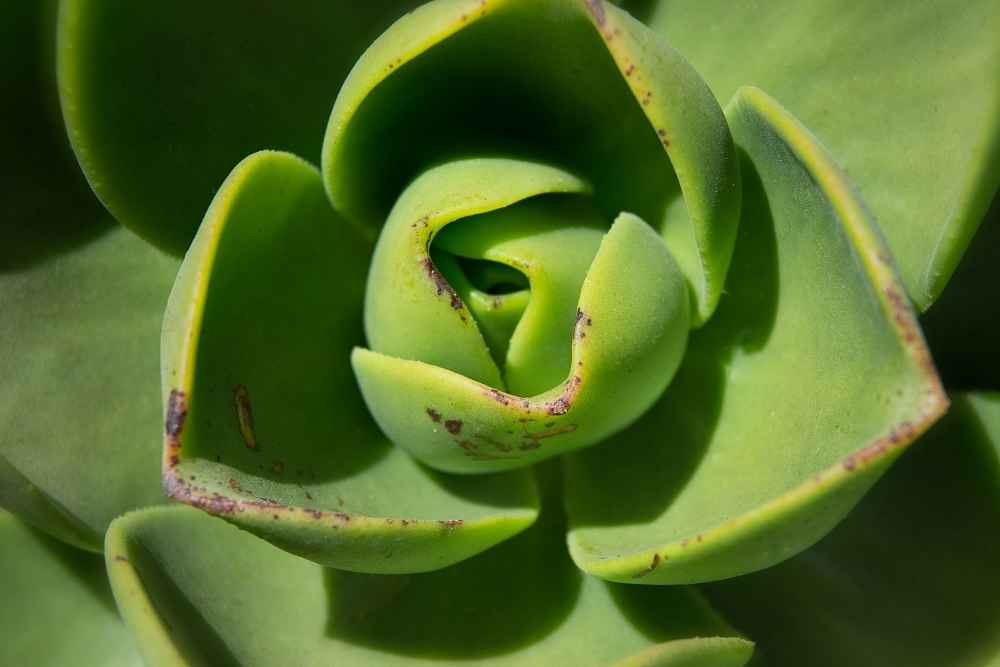
Plant Size
Jade plants are giant plants that will take up too much space in your home. They might start small and eventually mature into being three to six feet tall. The leaves are only a few inches long and wide.
Growing Jade plants will require new soil and a bigger pot to remain healthy and thrive. Ensure to use the fresh potting mix to promote further growth and keep its roots in good condition.
Light
Like all houseplants, Jade Plants need a light source to continue its maintain its growth. Light is essential for plants since they use light as a fuel source for energy.
The Jade Plant requires at least 4 hours of bright light. Overexposing your Jade plant to direct sunlight will cause the leaves to be brown, and the plant may die. Place your Jade Plant near a window where it is sure to receive plenty of bright indirect light.
Watering
Like most succulents, the Jade Plant is drought-resistant and can handle a little neglect when watering. Jade Plants require more water in the spring and summer and should receive less water during the winter.
Too much water may potentially kill your Jade Plant. It will also make it more susceptible to root rot, a common fungal infection in plants.
To prevent root rot from killing your plant, make sure you keep your Jade plant in a pot with drainage holes so water can escape and save the roots from drowning. Allow the soil of your Jade Plant to dry before watering. Depending on how long it takes for the soil to dry, you might end up watering it weekly or monthly.
Humidity and Temperature
Jade Plants do best when kept in chill temperatures of 55 degrees to 75 degrees Fahrenheit. Some homes may get warmer than 75 degrees —especially in the summer — but the Jade plant will be fine if you meet its water and light requirements. The Jade Plant prefers low humidity but will still experience growth in normal house humidity levels.
Why Choose a Jade Succulent for Your Home?
The Jade Plant is easy to grow and is perfect for gardening enthusiasts of all skill levels. It is highly sought after because it is a beautiful decorative piece.
If you ever thought about starting a bonsai tree, the Jade Plant is great for beginners because it is very resilient. If you need even more reasons to keep Jade Plants as houseplants, check out the information below.
Eases Nervousness and Enhances Mood
Most people live busy lives split between work, hobbies, family, and friends. You might feel stress trying to juggle everything at once. If you surround yourself with Jade Plants, you may start to feel more tranquil.
Research suggests that people find nature to be soothing and enjoy being surrounded by ornamental plants. You and your family may be in better moods by keeping them in common areas, like living rooms and kitchens.
Boosts Creativity and Natural Healing
It is common to bring flowers when visiting a patient at a hospital. Flowers are lively and make people happy. If you own a couple of Jade Plants, you might catch yourself dealing with fewer colds or allergies.
A lot of famous paintings involve scenic images of nature. To this day, plants inspire people to use their full creative energies.
Purifies Air
Keeping several Jade Plants is one of the most natural ways to clean the surrounding air of pollutants. A study from NASA suggests that houseplants can lower the effects of common household airborne toxins like cigarette smoke and formaldehyde.
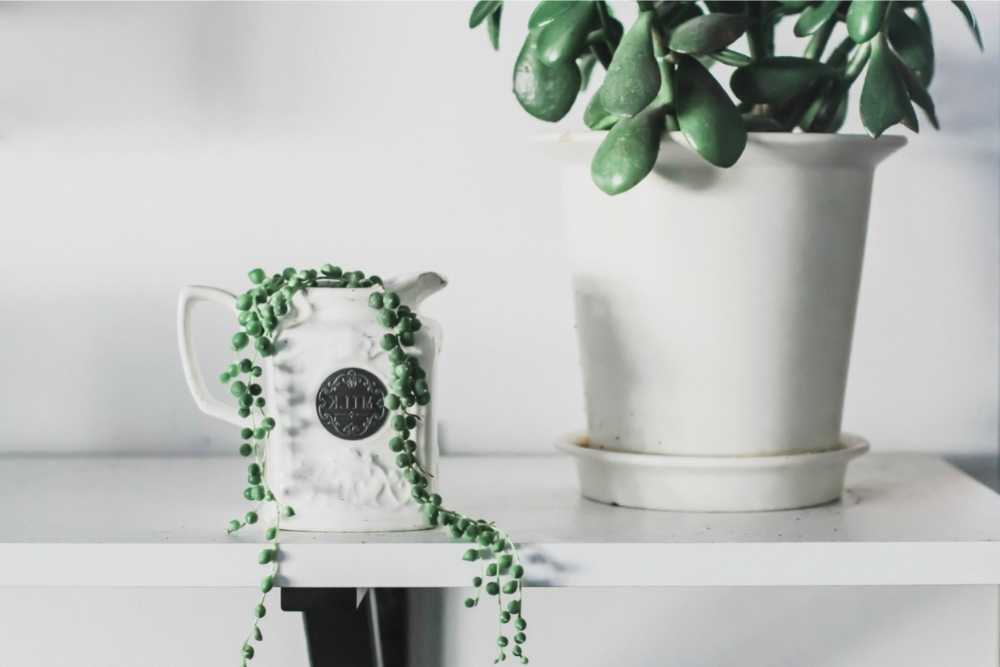
Are Jade Succulents Good Indoors & Outdoors?
The Crassula Ovata can ideally be kept outside or inside. Both locations require different care requirements and levels of experience.
If you’re planning to keep your Jade Plant outside, ensure it is kept in the shade where the temperatures are cooler. Your Jade Plants can be their garden or group up with other outdoor plants.
Avoid growing jade plants in extended hours of direct sun. Bright light is still vital for this plant to thrive.
If you live somewhere with temperatures reaching below 50 F, it is best to keep your Jade Plant grown indoors as a houseplant. If the temperature is within the right conditions, you may keep this plant outside but keep your eye on the temperature — feel free to bring your plant back inside if it gets cold overnight.
Most plant parents have better luck keeping the Crassula Ovata as a houseplant. It is indoors where this plant can continue to thrive with only minimal care.
Are Jade Succulents Pet and Children Friendly?
There is no denying the beauty of the Jade Plant. Even though you can begin to daydream by just gazing at it, it is toxic for pets, children, and people.
For people, the plant is mildly toxic and could cause unwanted side effects. The Jade Plant’s juice or sap may cause minor redness or irritation on the skin. If accidentally ingested by small children, it may cause temporary digestive issues.
Jade Plants are very harmful to animals if ingested. It may induce vomiting, an upset stomach, and other unwanted symptoms. Contact the Animal Poison Control Center at (888) 426-4435 or reach out to your local veterinarian as soon as possible if you feel that your pet ingested the Jade Plant.
Jade Succulent Family Relatives
Jade Plants are not the only popular succulents indoor gardeners are raving about. Here are other relatives of the Jade Plant that you can add to your collection.
- Echeverria Plant: This succulent is recognized for its rosette pattern leaves available in different colors.
- Aloe Vera: This plant is not only resilient and beautiful, but it also has medicinal value. The gel of Aloe Vera treats sunburns on the skin.
- Giant Velvet Rose: A slightly larger succulent, the Giant Velvet Rose is known for being sturdy and can be kept in an outside garden.
Plant Types That Are Similar to the Jade Succulent Plant
If you want to add a little more variety to your indoor garden collection, the following plants are great additions and look nice next to a Jade Plant.
- Rubber Plant: The Rubber Tree enjoys receiving bright indirect light and grows large enough to take up a corner in your home.
- Chinese Evergreen: One of the most durable indoor plants available, the Chinese Evergreen has green leaves with splashes of cream colors.
- ZZ Plant: The ZZ plant is perfect for people who want to add green to living spaces but do not receive too much bright light.
Final Thoughts – Jade Succulent
People may have a lucky amulet or item that brings them better fortune. A Jade is an excellent good luck charm to fulfill this need. Keeping a Jade Plant in your home will bring you good luck and encourage a better overall quality of living.
Aside from those positive benefits, the Jade Plant will look great in your new home or on your office desk. If you are interested in other indoor plants, check out PlantedPot!
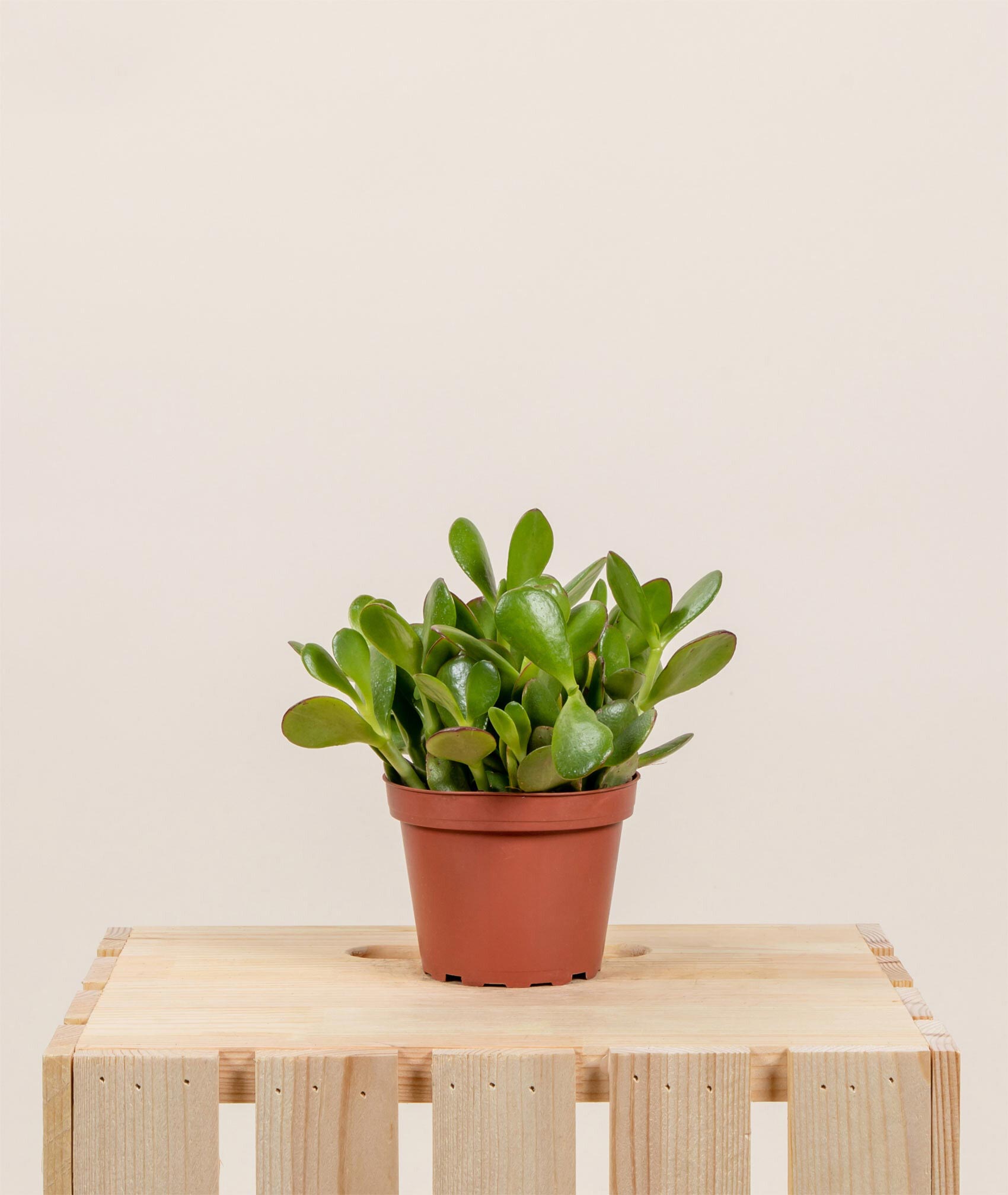
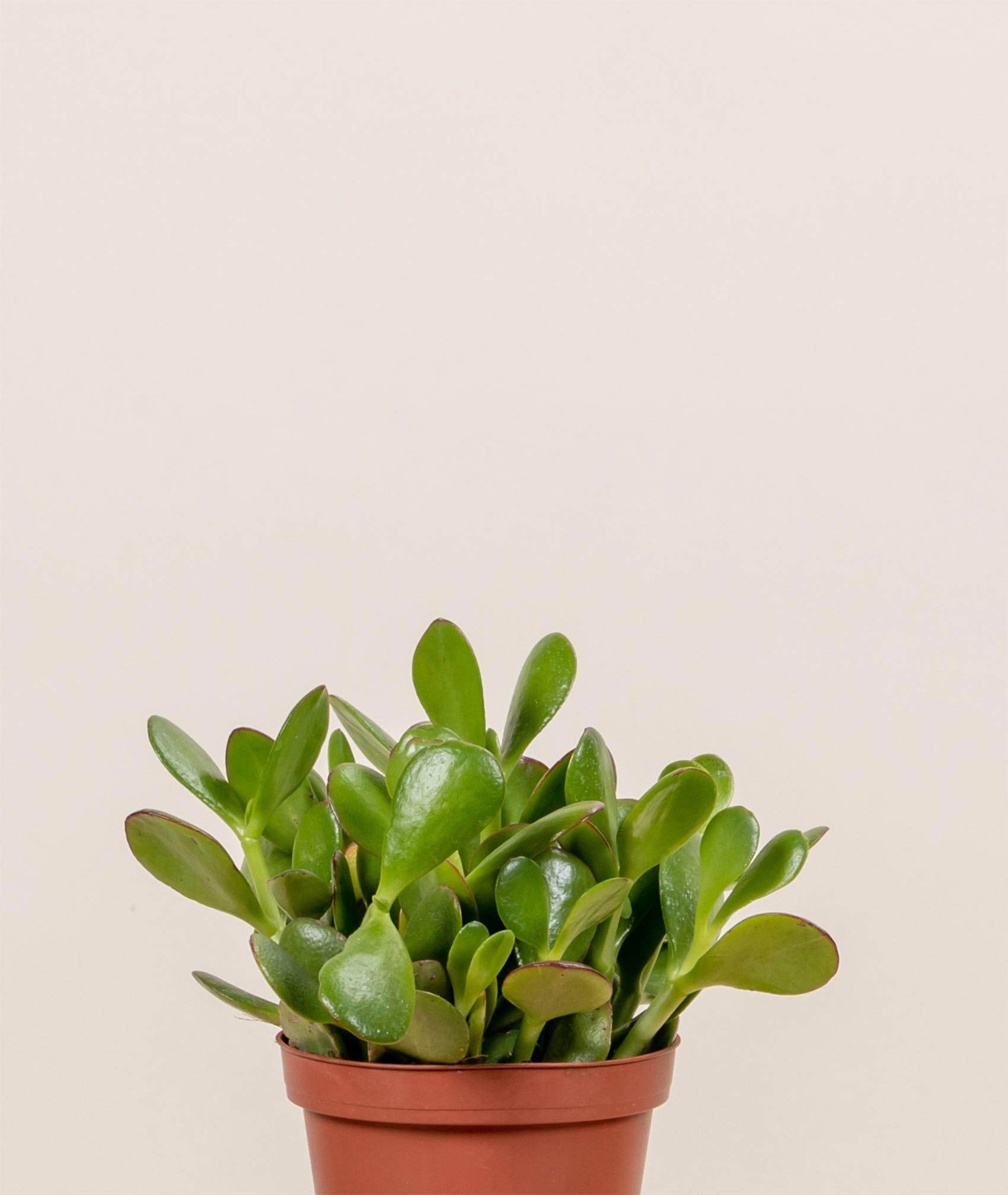


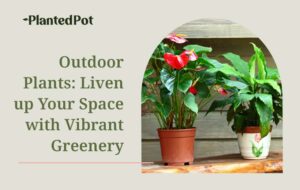
Reviews
There are no reviews yet.